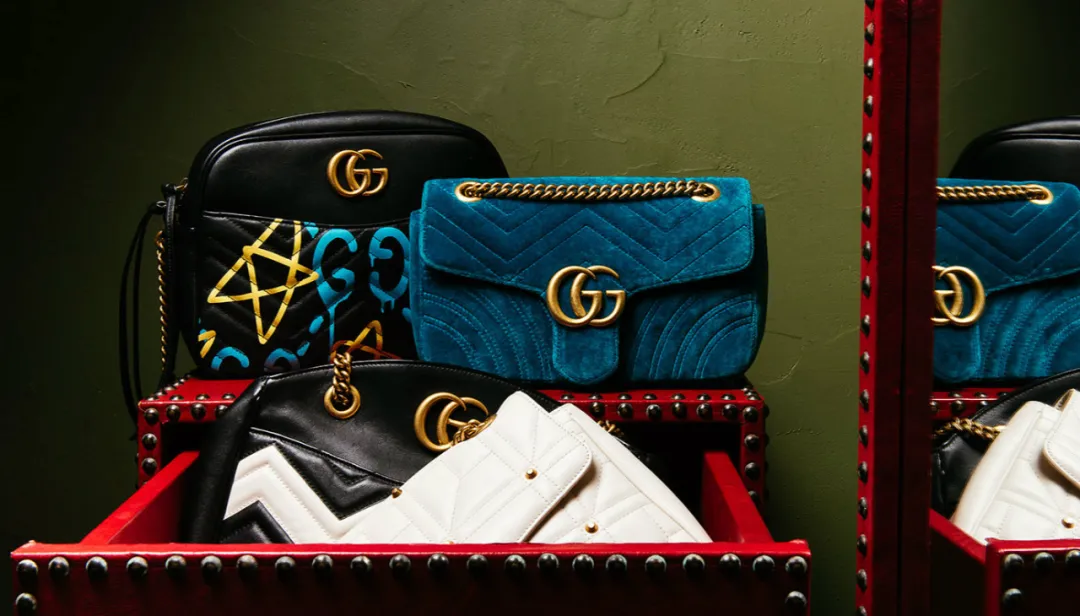If it weren’t for Demna’s own mention, perhaps few would have realized that this year is Demna’s tenth year as the creative director of Balenciaga.
In 2015, Demna took on this milestone appointment in the industry, relying on Vetments’ phenomenal success in the core fashion circle of Paris, and embarked on a new experiment in the luxury brand battlefield.
In a blink of an eye, there are ups and downs. From being criticized for the huge contrast between personal style and traditional haute couture concepts in the early days, to tightly connecting brand names with personal aesthetics, no matter how much controversy, one thing can persist for ten years, no matter what.
The Balenciaga Winter 24 series was released in Paris yesterday. You don’t need to wait for the runway release, as you can clearly feel the strengthened influence of Demna’s aesthetic style over the past decade from the crowd standing outside the runway. When a creative director fully injects personal aesthetics into a luxury brand name, no, a revolution has been completed.
Starting from the initial prototype of the worldview, each season’s series is enriched with stories and products, ultimately settling into a complete brand universe. The Balenciaga Winter 24 series is another 3D rendering of this brand’s universe.
The runway is completely wrapped in a display screen from the top to the ground, and from morning to night, there is still a natural scene at the beginning. As light and shadow change, the content on the screen shifts from reality to digital virtuality. Hundreds or even thousands of short videos were played simultaneously, then turned into signalless white noise, and finally came to an abrupt end.
As early as the 2020 release of the “Afterlife: Tomorrow’s World” video game project for the Balenciaga Autumn 21 series, it can be concluded that Demna’s Balenciaga is not only continuing to build a material high-end fashion house, but also not limited to becoming an abstract luxury brand in the contemporary sense. It is also building a game world that is close to reality, with fashion serving to shape characters.
Afterwards, whether in the mud, on the streets of Paris in the rain, or at the red carpet theater, Demna simulated the world in different worlds, trained her personality, and developed the intelligence of this world. On the one hand, it faithfully reflects the diverse styles of Parisian street people, and on the other hand, it pushes it towards more dramatic expression.
The result is that Demna’s followers in the real world seem to present an image that transcends the real world, and the people on the runway always remind you of those people who shuttle through the streets and alleys, you don’t know, but their style is intriguing. More importantly, from the first day on, this group is not just young people, nor does it highlight gender.
Demna has truly achieved the confusion between reality and virtuality.
Such revolutionary achievements require both persistent accumulation and penetration, as well as necessary emotional stimulation. “Sometimes you need to anger people,” said Jonathan Anderson, creative director of Loewe, another evergreen tree and colleague of Demna, recently
Demna never revealed this secret, but she is a practitioner of this truth. Even in Demna’s tenth year in office, he dared to recreate and upgrade a dress from multiple pieces of underwear as the closing style for a mainstream luxury brand’s Winter 24 collection.
So far, Demna not only continues to have a deep understanding of how to effectively mobilize public emotions, but more importantly, as a professional creative director, she is still willing to communicate with emotions and sincerity.
Before the show, the invited guests received an invitation letter from Demna herself, selecting items from the shopping website eBay. Each person received almost unique items. Demna shares his favorite way of obtaining inspiration with people, buying a product from someone he doesn’t know, in order to give this once abandoned old thing a new life. This is also a creative approach that Demna’s Balenciaga has persisted in for ten years, which is to rethink daily life.
Hi, I would like to use this voice message to introduce the upcoming show. You know, I enjoy constantly reflecting on things that I think are important in my work. Recently, I have been thinking about things like: what is luxury goods? What is fashion? Why is fashion so important? For whom does my work go? Is fashion meaningful enough? In a world of content overload, is there anything meaningful enough? What is considered meaningful enough? What really matters is not necessarily finding the answer, but the process of thinking about asking questions
The textual commentary on the runway has also changed the rhetoric of fashion news releases, using the most plain and communicative language, instead of exaggerating the creative concept of the series, and focusing on the highlights of each product. For example, “COOLST BEANIE EVER, PULLS DOWN Over THE EYES TO GIVE AN ATTITUDE, BUT IT IS STILL POSSIBLE TO SEE.”.
The text explanation is simply divided into ready to wear and accessories, arranged in bold and capital letters, with irregular carriage returns, almost like a memo for everyone to record private information.
As he said, in the past decade’s works, Demna has clearly not provided a final answer to questions such as whether fashion is meaningful, and sometimes even appears contradictory.
For example, he enjoys the convenience of digital technology, but he has always had a reflection on information and content overload. He claimed in March last year that he would focus on making clothes, but he did still benefit from the hot topics brought by every creative gimmick. He covered the entire runway on the screen with hundreds of short videos to remind people not to focus on less important things, but also expressed concern after the show whether the screen would dilute people’s attention to the fashion itself.
The thinking process of asking questions is more important. If Demna has a solution to these contradictions, then he may have solved the philosophical issues facing humanity in the information society. However, the fact is that no one has an answer, he is just using the media of fashion to bring up problems with more novelty, and trying to maintain sincerity and awareness.
Moreover, such awareness can be considered unique in the luxury goods industry environment. Few luxury brands insist on paying attention to contemporary social issues in each season’s new series, seeking genuine connections with the audience. This may not be difficult for independent designer brands, but it is not easy under the commercial machinery of luxury brands.
He persisted in not catering to popular aesthetics and introduced subcultures belonging to a small group of young people into luxury brands with a larger audience, achieving commercial success. If we extend this starting point to a decade, it looks more like an outlier in the luxury goods industry.
Demna was frank about her methodology in this winter 24 series monologue.
“Balenciaga is a brand that places great emphasis on creative value, and I want to connect its past and future through this release show. Firstly, the silhouette and theme were directly inspired by Crist ó bal Balenciaga’s works, and then moved on to further exploration of fashion concepts. These concepts make up all of my works: they rethink the definition of beauty, create a recognizable style at a glance, and focus on the integration and interaction between the body and fashion.”
This cannot be said to be a precise and complex methodology, but Demna does not pretend to be profound or complex. He is passionate about presenting concepts that are always straightforward enough to make some people laugh, such as a series of semi-finished fashion pieces glued with winter 24 series tape, realistic lace printed stockings with layered misreading effects, and brand gray dust bags, shoulder bags, and nylon fitness bags that have been recycled and transformed.
These design highlights are immediately apparent and closely related to daily life. Since the issue of stretching stockings has been troubling women, it is better to launch extremely worn-out stockings products. Mobile phone screens are already inseparable from people’s daily lives, so at least a phone case with a thick bracelet can be launched to briefly free up hands.
For a mature fashion house with a strong team, it seems even more difficult to create fashion with low craftsmanship and exquisite workmanship.
Demna dares to bring plastic tape onto the runway and claims that these fashion pieces are still unfinished work in progress. He also launched a one minute crash design, where multiple pieces of clothing were transformed and sewn together into a brand new look. The hoodie at the bottom was reversed, transforming the sleeves into a mermaid tail skirt.
In luxury brands that advocate for labor-intensive production, it is not uncommon for dresses to take hundreds of hours to be made, while a one minute quick design is scarce. This irony is naturally intentional by Demna.
Once again, it is emphasized that the creative director’s presentation in a luxury brand with broad public influence cannot be compared to the creative expression of an independent designer. The platform determines the revolutionary energy level, and Demna’s accumulated personal reputation allows him to successfully sell his views and stories on this platform, which can be recognized by both his followers and brand management.
An independent designer who has not accumulated a decade of word-of-mouth experience, even if their design is superb, cannot skip the decade of experience and achieve an ideal perfect result in complex environments. The difficulty is not in making clothes, but in presenting a sufficiently challenging concept and avant-garde style to the audience through the layers of contemporary luxury goods business, leading a fashion trend, and persisting in this for ten years.
This requires a creative director with a sufficiently firm aesthetic core. “This season’s collection expresses the aesthetic concepts I have believed in since entering the fashion industry for ten years. The recognition and belonging to these concepts is precisely why fashion is so important to me.”
But just the aesthetic core is not enough. As creative directors of contemporary luxury brands, they need to have a global perspective and a true and unique understanding of the definition of luxury goods.
Demna believes that “luxury goods represent a scarcity rather than repetitive or unlimited production. The luxury goods that are truly scarce and needed in this industry are creativity itself. In my opinion, creativity has become the most precious luxury goods.”



















